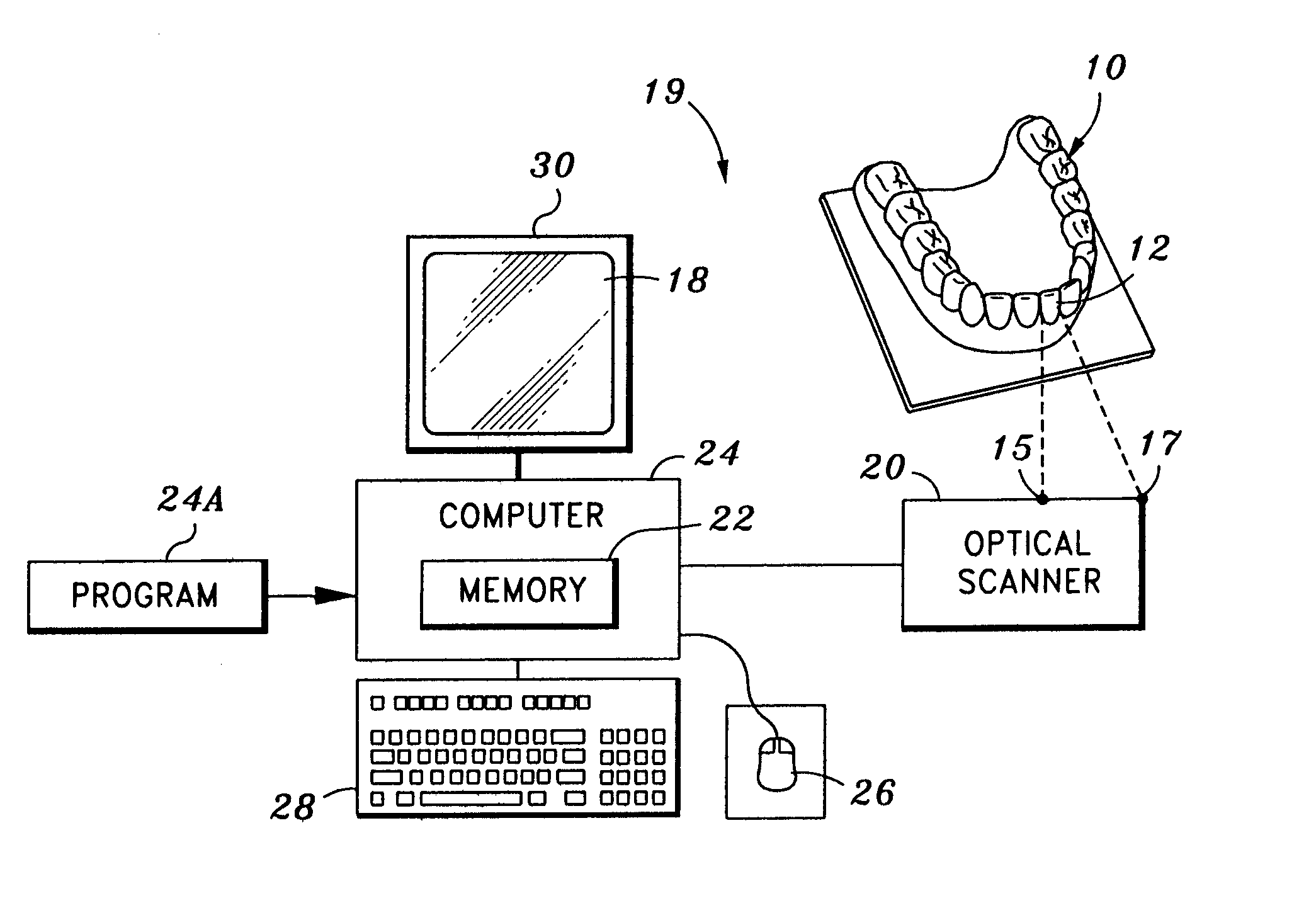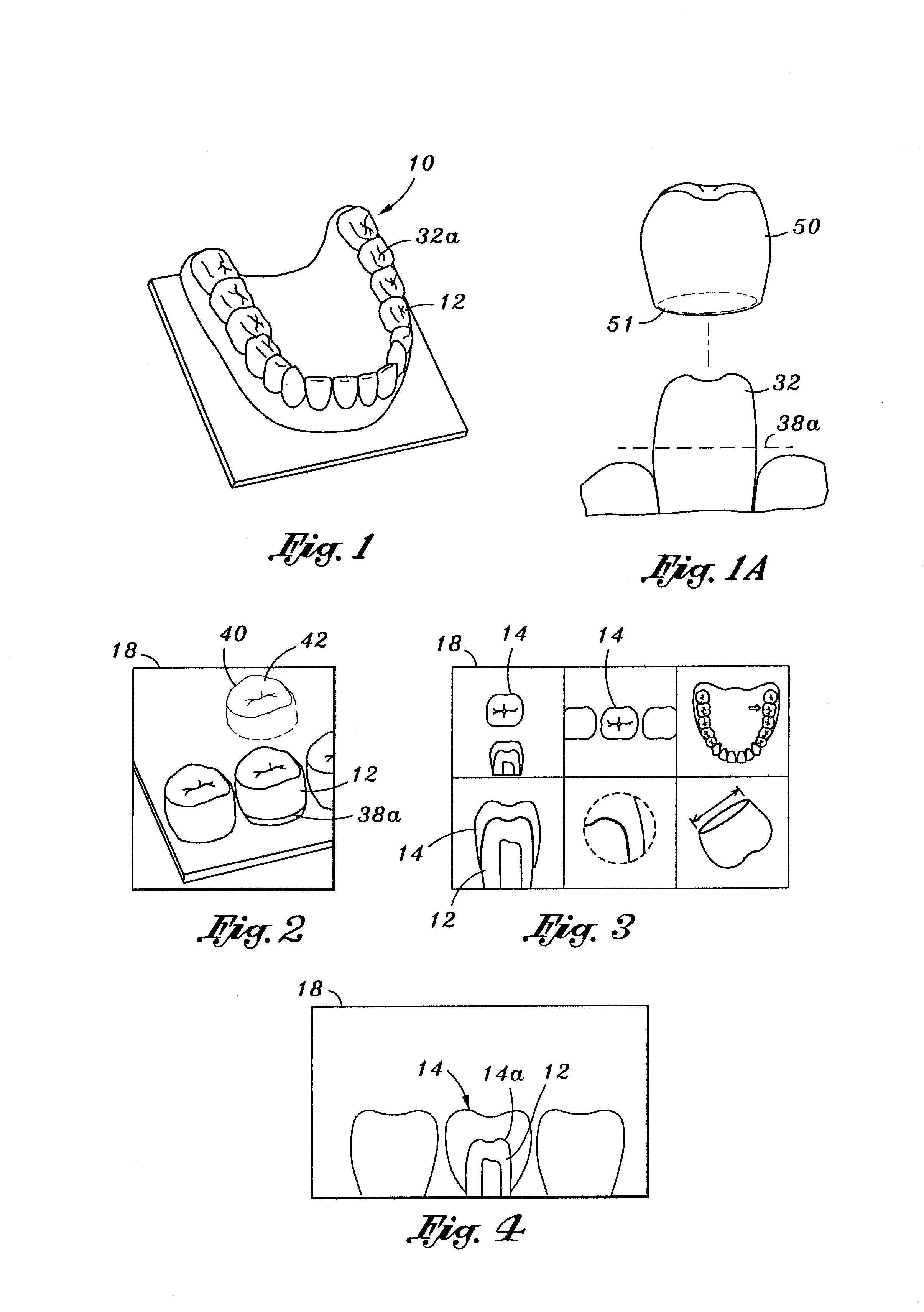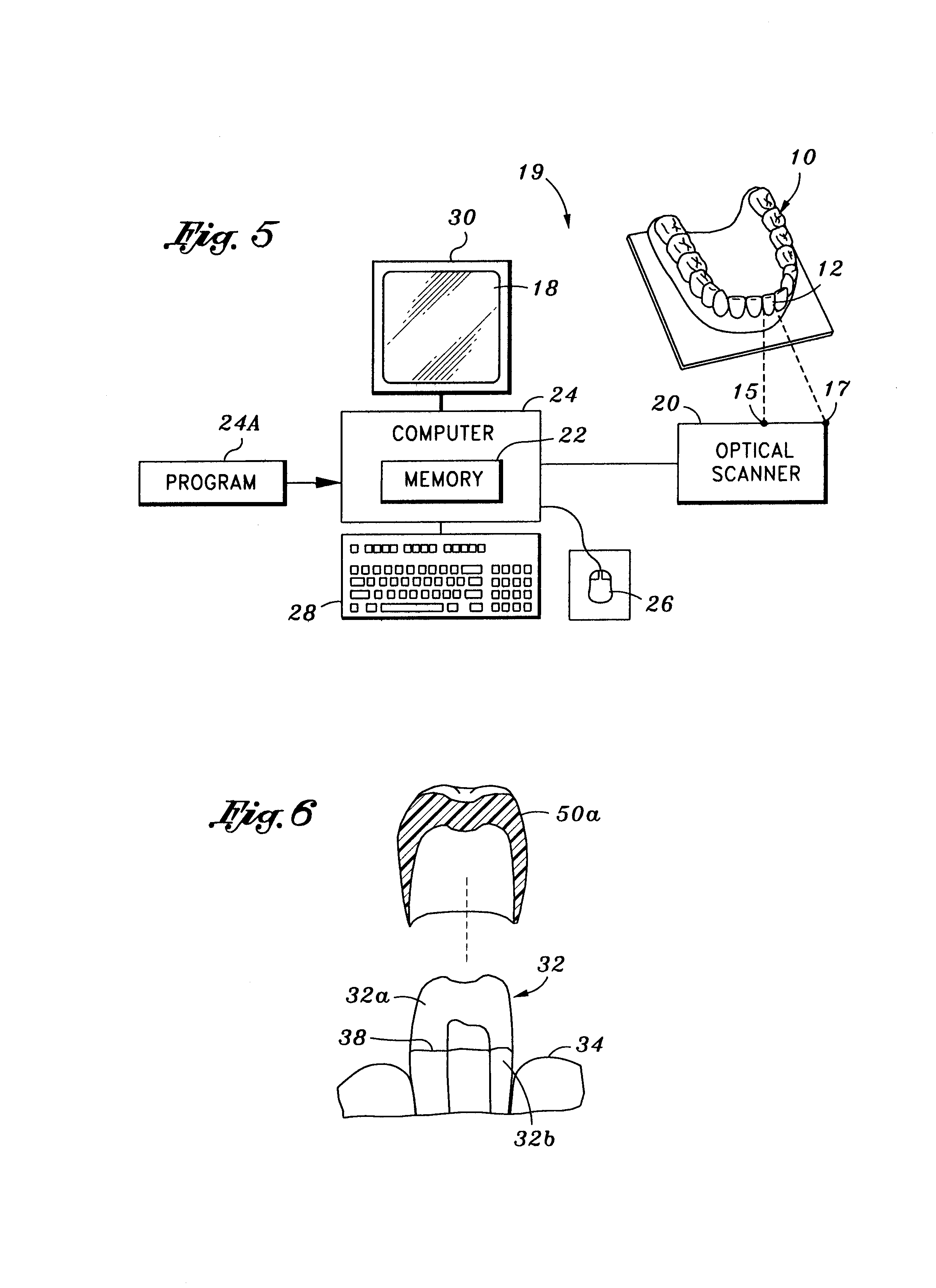Dental prosthesis manufacturing process, dental prosthesis pattern @$amp; dental prosthesis made thereby
- Summary
- Abstract
- Description
- Claims
- Application Information
AI Technical Summary
Benefits of technology
Problems solved by technology
Method used
Image
Examples
Embodiment Construction
[0021] In accordance with conventional techniques, a model of a patient's dentition is made. The upper jaw portion 10 of such a model is shown in Fig. 1. A lower jaw portion of this model is also used to collect tooth surface data, but is not shown. For purposes of illustration as shown in Fig. 6, an actual stump 32 to which a crown type 50a dental prosthesis is to be attached includes a drilled away portion 32a and an undisturbed portion 32b next to the patient's gum 34. Where the contiguous borders of the portions 32a and 32b meet, as defined by the line 38, a margin is formed. The jaw portion 10 includes a replicate 32a of the stump 32 to which the crown type dental prosthesis 50a is to be attached.
[0022] As shown in Fig. 6, computer aided design equipment 19 creates an image of a dental prosthesis based on data collected from the model of the patient's dentition. As illustrated in Fig. 7, computer aided design equipment sold under the trademark LabQraft by Dentalmatic Technologi...
PUM
 Login to View More
Login to View More Abstract
Description
Claims
Application Information
 Login to View More
Login to View More - R&D
- Intellectual Property
- Life Sciences
- Materials
- Tech Scout
- Unparalleled Data Quality
- Higher Quality Content
- 60% Fewer Hallucinations
Browse by: Latest US Patents, China's latest patents, Technical Efficacy Thesaurus, Application Domain, Technology Topic, Popular Technical Reports.
© 2025 PatSnap. All rights reserved.Legal|Privacy policy|Modern Slavery Act Transparency Statement|Sitemap|About US| Contact US: help@patsnap.com



